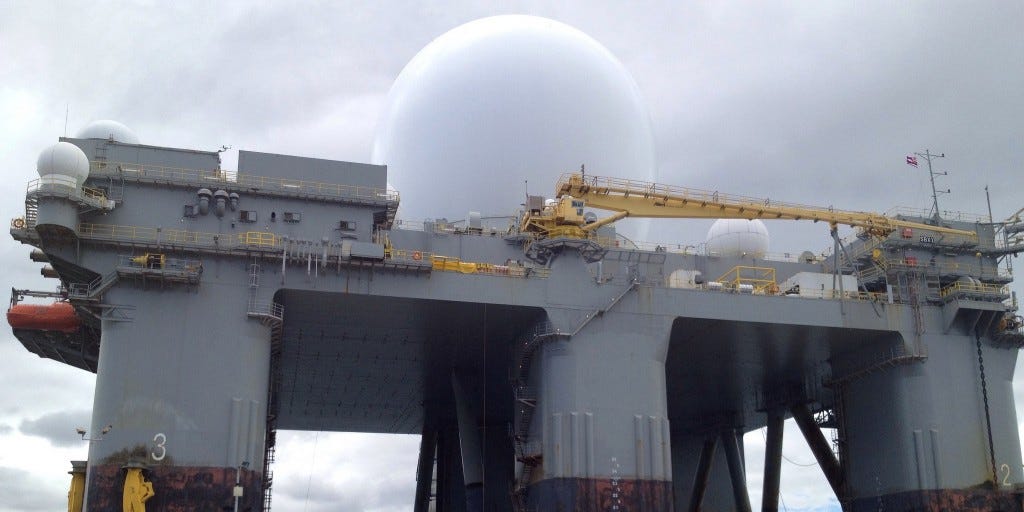Pearl Harbor SBX Sea Sentry Under Fire

The Sea-Based X-Band Radar platform, or SBX, has towered over Ford Island in Pearl Harbor for years. It's no Statue of Liberty, but it's definitely become a landmark of sorts, perhaps the most visible single representation of the extensive military presence in the islands.
A special report in today's Los Angeles Times features the SBX in a thorough takedown of the beleaguered U.S. Missile Defense Agency titled, "The Pentagon’s $10-billion bet gone bad." The SBX, dubbed by the paper as "a $2.2-billion flop," is one of four ill-fated programs featured in the report, alongside The Airborne Laser, The Kinetic Energy Interceptor, and The Multiple Kill Vehicle.
"These expensive flops stem in part from a climate of anxiety after Sept. 11, 2001, heightened by warnings from defense hawks that North Korea and Iran were close to developing long-range missiles capable of reaching the United States," writes David Willman. "President George W. Bush, in 2002, ordered an urgent effort to field a homeland missile defense system within two years.
"In their rush to make that deadline, Missile Defense Agency officials latched onto exotic, unproven concepts without doing a rigorous analysis of their cost and feasibility," he notes.
Many of the problems raised in the L.A. Times story aren't surprising, and sadly almost expected when it comes to military research and development. And the assertion that state and federal legislators whose constituents benefitted from the spending were among the program's most ardent supporters is hardly news. But the SBX surely had thousands of true believers, from engineers to politicians, who thought it would work. Who built the thing.
And the thing is mighty impressive.
I was among a group of local geeks that got to board and tour the SBX in the summer of 2012. I took some photos (there were many places you couldn't take photos) and put together a video. Today's news inspired me to revisit that visit.
The SBX was placed on a floating platform so it could be moved around as needed, and seen as a more affordable implementation than multiple radar installations on land. Unfortunately, operating at sea has its own challenges: high wind and waves, salt water, and lots and lots of fuel.
Yes, the radar has incredible range. But a narrow field of view -- 25 degrees, to be exact, compared in the piece to looking through a straw. "“It’s an extremely powerful soda straw, but that’s not what we needed,” one expert said.
And the L.A. Times piece takes on the most commonly told story about the power and accuracy of the SBX: that it could, from Virginia, track a baseball fired into the sky in California. Willman writes:
"Because of Earth’s curvature, SBX would not be able to see a baseball at such a distance — about 2,500 miles — unless the ball was 870 or more miles above San Francisco. That is about 200 miles higher than the expected maximum altitude of a long-range missile headed for the U.S."
D'oh.
As a 2013 report from the General Accounting Office notes:
"After approximately $2 billion had been spent in several years of development, the SBX seabased radar was downgraded from operational status to a limited test status because of funding limitations... By transitioning SBX to a limited test support status, MDA officials expect to save almost $670 million in operation and maintenance costs for fiscal years 2013 through 2018."
So the expensive to build, expensive to operate SBX stands quiet sentry over Pearl Harbor, only rarely heading out to sea.












